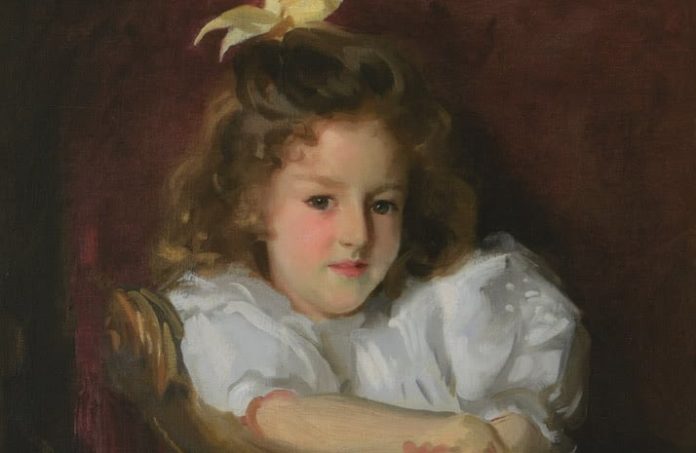
A remarkable 1900 portrait of the youthful Charlotte Cram by master painter John Singer Sargent has a new home after this museum’s board of commissioners authorized its purchase — and it’s already on view.
The Saint Louis Art Museum has a new jewel to show off for its visitors: an outstanding portrait of Charlotte Cram, circa 1900, by John Singer Sargent. Museum Director Brent Benjamin said the museum had long sought a masterwork by Sargent and that administrators are overjoyed at the acquisition.
“The purchase of ‘Portrait of Charlotte Cram’ underscores the Saint Louis Art Museum’s commitment to building its collection through strategic acquisitions,” Benjamin said. “The painting fills a critical gap in the museum’s American art collection, and I have no doubt the portrait will become a favorite for our visitors.”
Curator of American Art Melissa Wolfe said, “Sargent’s depictions of children are an important part of his oeuvre, and this portrait of a 7-year-old American abroad has all the desirable aspects of this subject.”

Wolfe continued, “Charlotte sits in an oversized chair with the unaffected charm of youth. The sparkle in her brown eyes, barely restrained smile, and tilt of her head is endearing without falling into the excess of sentimentality. Her youthful exuberance is only barely contained by the decorum of portraiture.”
Wolfe noted that Sargent’s ability to capture Charlotte’s psychology is matched by his extraordinary technical and aesthetic abilities. “Charlotte’s white taffeta dress and oversized yellow sash and bow are conveyed in the fluid, bravura brushstrokes that characterize the best of Sargent’s works.”
The painting will be installed in a gallery devoted to American art created between 1870 and 1920 — a period marked by the creation of vast fortunes, rampant political corruption, oppressive working conditions, and financial panics. During this period, conveying one’s social position became less clear, and taste — or the ability to discern the fine from the common — became a mode to set the wealthy apart. Other highlights of Gallery 335 include Henry Ossawa Tanner’s “Gateway, Tangier” and Winslow Homer’s “The Country School.”
To learn more, visit the Saint Louis Art Museum.
This article was featured in Fine Art Today, a weekly e-newsletter from Fine Art Connoisseur magazine. To start receiving Fine Art Today for free, click here.







